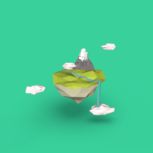Currently, there's no big complete authoritative source of documentation on many aspects of Forge modding; most modders go by reading tutorials and guides for simple to mid-level concepts, and either reading source code or asking for help on chats or forums like these for more difficult or niche concepts (minutiae of rendering, MC internals, custom dimensions/worlds).
Most big guides and tutorials are outdated; major updates to Minecraft means changes to its internals. For example, 1.8 started the process of moving from metadata to BlockStates, 1.13 had the Flattening and added datapacks, and 1.15 changed the rendering system.
Some guides and tutorials which I found and read are:
the official Minecraft Forge documentation
McJty's youtube tutorials (McJty is the modder for RFTools)
TheGreyGhost's MinecraftByExample github
TheGreyGhost's blog with explanations to key concepts
these Minecraft Forge forums (search Modder Support or User Submitted Tutorials using Google)
Choonster's TestMod3 (check the 1.14.4 branch)
Now, to answer your titular question:
Blockstate JSONs using the multiparts tag allow a quick and easy way to implement pipe- or fence-like models. Non-animated models can use JSONs, or OBJ files. For anying more complex or animated, use TileEntityRenderers (but if possible, always use normal models).The 1.15 update changing the rendering system simplifies it from learning OpenGL from scratch to mostly never needing it. See Block#getShape and related methods for how collision boxes work (look at vanilla code or above tutorials).
If you can't understand it yet, try looking at code from other mods and seeing how they do block rendering. Fork/clone a copy, and start reading and messing around with the code using the debug tool in your IDE. If you have any questions, please either reply or make a new thread detailing your issues or your questions.



.thumb.png.ff50d10d648bbbc175a24f03962e1a6a.png)